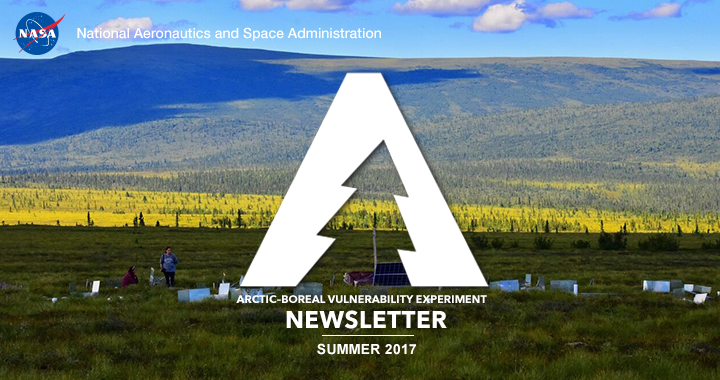|
This newsletter is distributed to participants of ABoVE activities on September 1, 2017 Note from ABoVE leadership:The ABoVE Leadership Team has been immersed in the 2017 airborne campaign, along with many of you from the broader Science Team, both in the air and on the ground. Chip Miller and Peter Griffith, in particular, have been engaged in the day-to-day aircraft operations, which started early in the Spring and will continue well into the Fall. More specifics on the 2017 airborne campaign can be found in their report in this issue of the newsletter. While the airborne campaign has been the primary focus of recent action, a great deal else continues to advance under the ABoVE umbrella. Additional projects have gained affiliated status with ABoVE, which currently numbers some 530 participants involved in 80 projects from over 160 institutions. Coordination with other research initiatives also continues, via both formal and informal associations. Among the more recent advances on this front is early coordination with Canadian proposals funded under the Global Water Futures initiative (see associated newsletter article in this issue). Similar efforts are underway with the European GlobPermafrost project and the Permafrost Carbon Network, among others. The permafrost component of ABoVE, one of six key science themes, was also featured in a recent news article in Science magazine. Members of the ABoVE Leadership Group have been holding (nearly) monthly teleconferences with the Leads of the thematic Working Groups to keep abreast of current advances on the science front. In turn, the WG Leads have been holding periodic teleconferences, webinars and workshops with their group members. We encourage you to join these WG interactions when possible as it’s a great way to be aware of and participate in advancing ABoVE science. We also want to make the entire science team aware of a new ABoVE Focus Collection of Environmental Research Letters, which is expected to be open to publications for the duration of the ABoVE program. We are all looking forward to hearing more about these efforts, and a great deal of other coordinated activities, at the 4th ABoVE Science Team Meeting (ASTM4) scheduled for 23-26 January 2018 in Seattle. The ASTM4 will be our first open science team meeting, meaning we will not be restricted to just 1 representative per project. Instead, we encourage up to 3 team members per project to attend, and we hope for extensive partner organization representation as well as postdoctoral researcher and early career scientist participation. An organizing committee for ASTM4 has recently been formed and will hold a series of telecons over the next few months to plan what we hope will be an exciting and highly interactive meeting that touches on nearly all aspects of ABoVE research and its applications to a wide range of land management efforts within the domain. -Scott, Chip, Peter, Eric, and Hank Airborne Campaign UpdateThe AAC began in April and will continue through October. Flights will gather remote sensing and in situ data over an area of nearly 4 million square kilometers that includes the state of Alaska; the Yukon, Northwest and Nunavut Territories; and the provinces of Alberta and Saskatchewan. Flights extended from the Arctic tundra to the southern edge of the boreal forest and from the Seward Peninsula on the western edge of North America as far east as Cambridge Bay, NU.

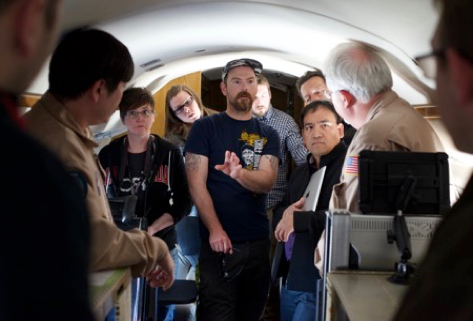
The first plane to get into the air was the ArcticC team in a Mooney equipped with CO2, CO, and methane in-situ sampling gear, which began a series of sorties in April that will end in October. Next were P-band SAR (formerly known as AirMOSS) in May and June, immediately followed by L-band SAR (aka UAVSAR) in June. AVIRIS and LVIS flew in July and August, accomplishing most of their missions, despite struggling with aircraft performance issues. The AirSWOT team likewise was very successful despite some camera and radar performance challenges. Winner of the “Aesop’s Fables” prize for slow and steady triumph was the CFIS team on their Twin Otter, which kept knocking down their goals one by one, flying “rosettes” around flux towers as far east as Daring Lake and as far north as Barrow and Atqasuk. The big guy did well too: ASCENDS on the NASA DC-8 showed its long legs by flying all the way to Cambridge Bay and back to Fairbanks in one sortie, testing laser CO2 sounder candidate instruments for the future space mission. Flights were coordinated with ground cal/val teams and other critical field measurements. Preliminary products have already been delivered from several sensors, and the quality of the data are outstanding. The Airborne Sciences WG looks forward to delving into all of the data more thoroughly once the campaign has been completed. The 2017 ABoVE Airborne campaign by the numbers:
Daily reports and science summaries are posted on the Airborne Dashboard. 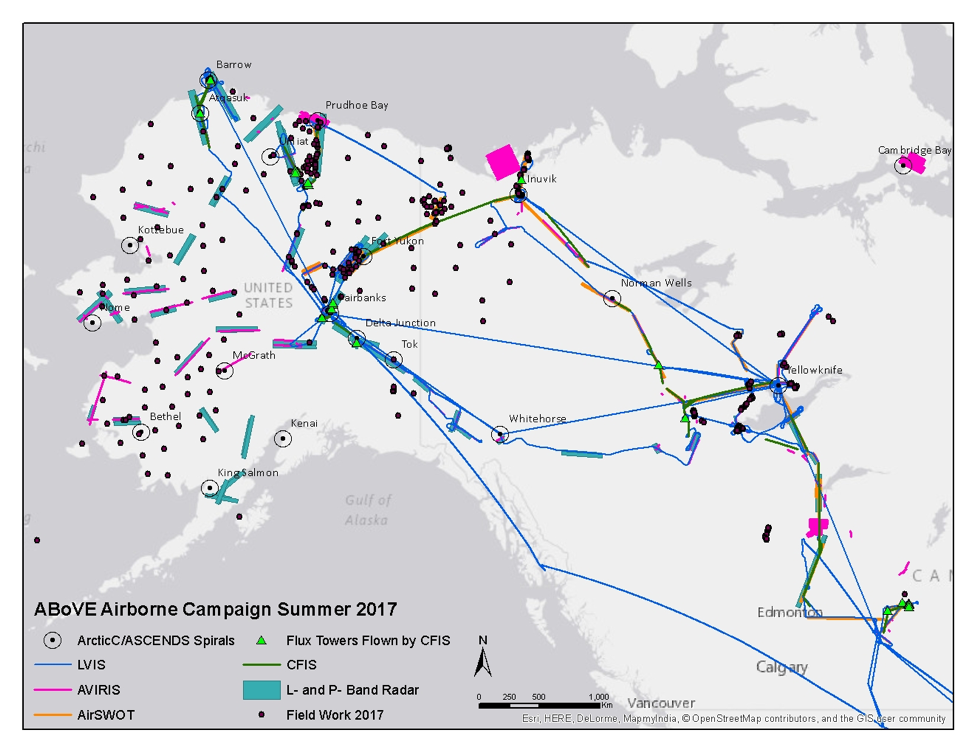
Field WorkBetween May and September 2017 over 30 groups connected with ABoVE are either making measurements in the field or collecting measurements though automated instruments installed in the field. Teams are dispersed throughout the ABoVE domain, ranging from Barrow, AK in the north, Seward Peninsula, AK in the west, Cambridge Bay in the northeast, and field sites in Alberta and Saskatchewan to the south and east. Twenty-five teams reported their planned measurements in the Planning tool on the ABoVE Website. Using the tool, you can view where, when and what data are being collected – if you haven’t entered your sites into the Planning Tool, please do so! Many of the teams (included NASA-funded, affiliated, and other collaborations) that collected data did so with the intention of supporting the analysis of the airborne instrument data (see the many field sites in the map above). The field measurements address many of the ABoVE science themes, such as vegetation, disturbance, ecosystem services, permafrost, and carbon dynamics. Field work continues into September in support of the airborne L-Band data collections which occur mid to late September. A big THANK YOU to everyone who has participated in field work this summer! Logistics and Safety Support
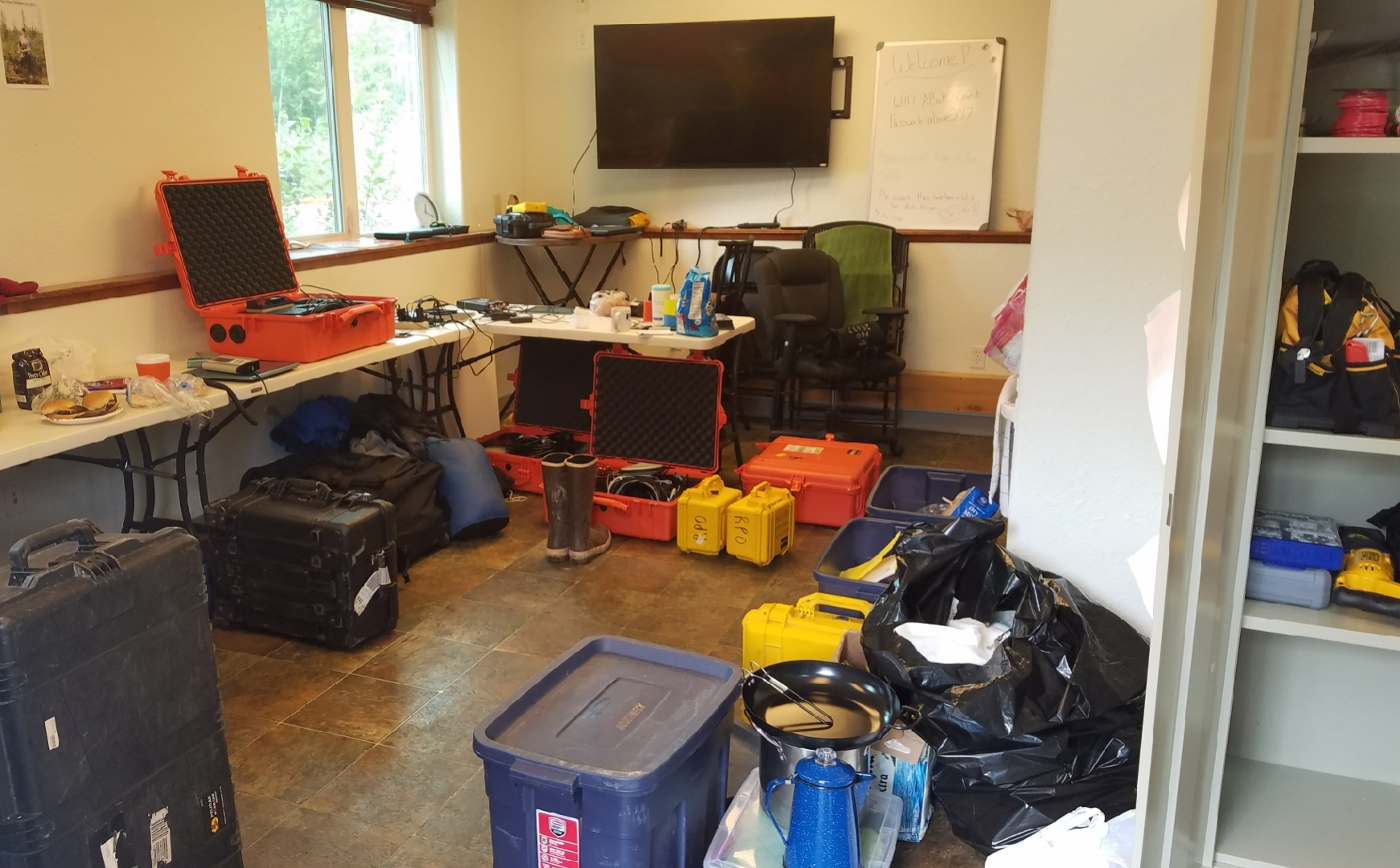
The CCE Office has supported 22 teams with varying logistical and safety needs in Alaska and Canada this summer. Requests for camping gear, communication devices, and trucks were on a steady rise throughout the summer. To meet some growing needs we have added additional storage space, GPS units and sat phones in recent months. Sarah Sackett at the Fairbanks Logistics Support Office continues to try to efficiently schedule the finite resources that are under high demand. Even as we support this summer's campaigns we are actively planning winter expeditions support and safety training for the spring.
In light of recent events, involving increased bear attacks in Alaska, we would like to emphasize the importance of Bear Safety in our daily field operations. Please consider reviewing the safe practices here and/or re-watching the bear safety video in your ABoVE Safety Training Plan.
If you have any questions, please contact safety@cce.nasa.gov. ERL Focus Issue / Collection is ready for contributions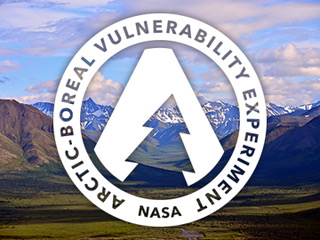
Environmental Research Letters™ is delighted to announce that its Focus on Resiliency and Vulnerability of Arctic and Boreal Ecosystems to Environmental Change: Advances and Outcomes of ABoVE (the Arctic Boreal Vulnerability Experiment), edited by Scott Goetz, Natalie Boelman, Abhishek Chatterjee, Roisin Commane, Joshua Fisher, Peter Griffith, Mike Goulden, John Kimball, Tatiana Loboda, Michelle Mack, Charles Miller, Sue Natali, Christopher Neigh, Brendan Rogers, Merrit Turetsky and Jennifer Watts, is now open for submissions. This ongoing focus collection will address the influence and impact of environmental changes, including climate change, taking place across the high northern latitudes and their influence on Arctic and boreal ecosystems. Earth to SkyLaura Prugh will be the featured scientist at a pre-conference workshop "Interpreting Climate Change: Understand the Science, Consider Audience Characteristics, and Explore Effective Techniques” associated with the 2017 National Association of Interpreters National Conference, Spokane, Washington, November 14-18, 2017. ABoVE AGU SessionsSixty-three abstracts were submitted to our AGU session "B070: The Resilience and Vulnerability of Arctic and Boreal Ecosystems to Climate Change”. The meeting committee assigned 4 oral sessions and a poster session. Get ready for 8 hours of Arctic-Boreal science talks! Global Water Futures Projects–
|
National Aeronautics and Space Administration

ABoVE
- NASA Official: Jon Ranson | Curator: Carla Evans
- Last Updated:
- Download Acrobat Reader

